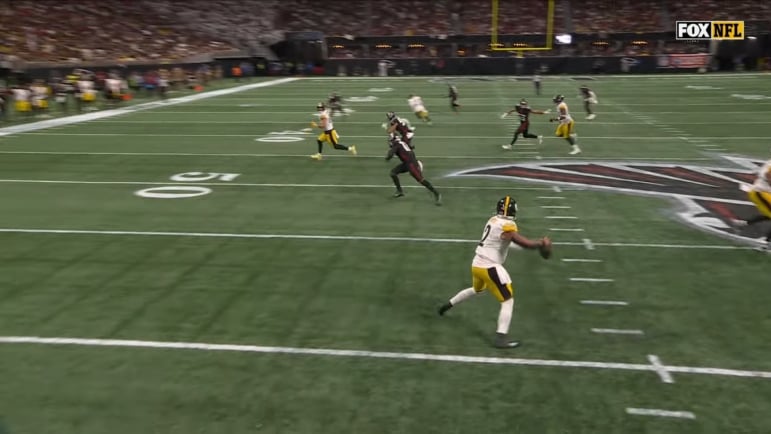The Pittsburgh Steelers got out of the stadium with a win on Sunday against the Atlanta Falcons, but it wasn’t necessarily an inspiring debut of Arthur Smith’s offensive system. They failed to get into the end zone and had to settle for six field goals, including three from over 50 yards, to secure victory.
That obviously won’t be sustainable, but it is still early in the season and the Steelers didn’t even have their intended starter at quarterback.
The passing attack in particular was heavily lacking in the win. While Fields completed 74 percent of his passes, that was just 17 completions for 156 yards. Up until five minutes were left in the first quarter, his longest completion was just 12 yards. The majority of them were roughly at or behind the line of scrimmage.
Fields started to test the Falcons vertically with two passes to George Pickens over the final five minutes of the first half. Both were complete for 77 yards, but the first of the two was called back due to a questionable offensive pass interference penalty on Pickens.
Mike Tomlin was asked about the Steelers’ passing attack and his philosophy on balancing quick passing with shots down field.
“We were thoughtfully non-rhythmic in that area,” Tomlin said in a video posted on the Steelers’ YouTube page. “Those were our intentions, and we need to continue to do so in an effort to stay a step ahead of the posse, if you will. Rhythm passing quells blitzing and rush. And obviously field-flipping plays minimize execution. I learned a long time ago, man, a 50-yard touchdown eliminates a lot of execution, and so we’re gonna aggressively pursue that as well. And I think we can do both.”
Fields is certainly capable of executing the explosive passing game. We saw that on Sunday with three deep completions (one called back). But how is he with the quick, timing routes? Former NFL QB Dan Orlovsky broke some of that down on X this morning and said Fields’ decision-making was too slow on Sunday to be effective in rhythm passing.
That is probably the biggest area where Wilson is an improvement over Fields. He isn’t perfect, but he is a veteran and has a much better internal clock with the quick concepts. He is also more than capable of pushing the ball down the field.
Other than Pickens, the other Steelers wide receivers combined for two catches on four targets for just 8 yards. A lot of that had to do with Fields’ issues in the quick-passing game.
We will see how the passing attack progresses, but it will need to get better than what we saw on Sunday. It is very possible that Russell Wilson’s eventual return will balance things out.








